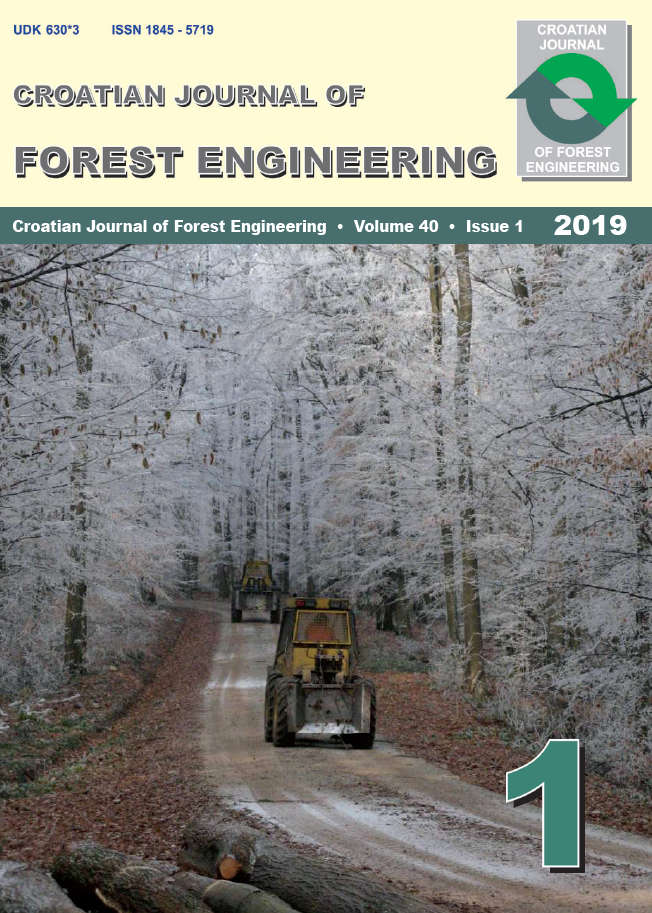South African Pine Cut-to-Length Harvesting: an Analysis of Fibre Loss and Productivity
volume: 40, issue: 1
pp: 9
- Author(s):
-
- Williams Chloe
- Ackerman Pierre A.
- Article category:
- Original scientific paper
- Keywords:
- cut-to-length, harvesters, productivity, merchandising, precision, plantations
Abstract
HTML
A study was conducted in Pinus elliottii and Pinus patula clear-felling stands in the Southern
Cape and Mpumulanga forestry regions of South Africa. A hybrid harvester was observed
over four compartments in a cut-to-length system in order to assess its productivity as well as
its precision with regards to potential fibre loss while processing Pinus elliottii and Pinus patula
for sawlog production. Potential fibre loss results show that the harvester contributes minimally
through inaccurate cross-cutting, accounting for 1.5% of the total wood volume processed.
Converted to a cost, this indicated losses up to € 0.18 m–3 for P. elliottii and € 1.61 m–3
for P. patula. Additionally, the machines were found to be more productive when working with
P. elliottii (32.12 m3 SMH–1) than P. patula (17.55 m3 SMH–1). Based on these findings, the
loss was estimated at up to € 22 650 and € 101 530 y–1 for P. elliottii and P. Patula, respectively.
Species showed to have a significant impact on the processing accuracy, with cross-cutting of
P. patula stems being less precise than P. elliottii. This was attributed to the species’ tendency
to grow thicker branches, although differences in harvesting conditions could have contributed.
Results suggest that harvesting P. patula stands in a CTL system requires more caution since
these can be associated with higher economic losses, and lower productivities. Considering the
recent growth of mechanised CTL harvesting, this study hopefully aids in exploring the efficacy
of a system, which has gone largely untested to date in South African conditions.

